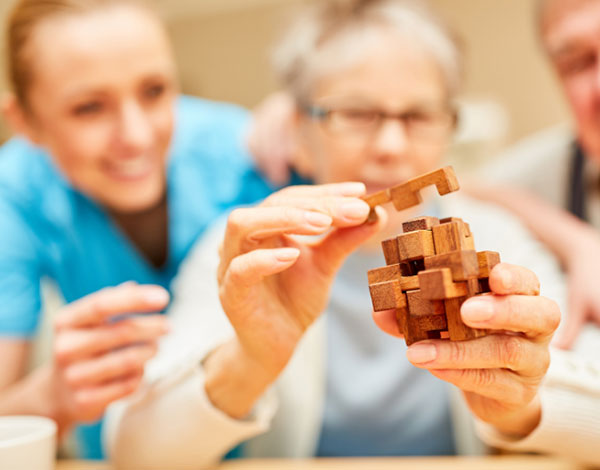
Alzheimer’s disease can be a distressing condition that significantly reduces quality of life, both for the person living with it and those who care for them. Brain-based therapies may offer a way to manage symptoms and improve quality of life.
Alzheimer’s is the most common form of dementia, affecting your memory, thinking and ability to perform daily activities. It happens when certain proteins build up in the brain. It’s a progressive disease, meaning it gets worse as time goes on.
Alzheimer’s disease is not a normal part of ageing but it does become more common as you get older. It affects about 10% of Australians over 65 and about 30% of Australians over 85.
There is no cure for Alzheimer’s (yet). Therapy program focuses on managing symptoms and slowing the progression of the disease.

The early signs of Alzheimer’s are usually memory loss and struggling to find the right words to name things. That happens to everyone from time to time but, if you’re beginning to feel concerned, it’s worth seeing your doctor.
Alzheimer’s can affect a person in many ways. You may:

Alzheimer’s is a brain condition. The brain helps you do many, many things including make decisions, understand information, plan or organise things, recognise people and objects and find your way around.
The experience of Alzheimer’s varies a great deal depending on which parts of the brain are affected. Symptoms often fluctuate and can be worsened by factors such as stress, illness or tiredness.
Living with Alzheimer’s can be lonely and frustrating and may lead someone to lose confidence in themselves and their abilities. Alzheimer’s also has a profound impact on carers and loved ones.
Alongside a quest to find more effective drug therapy programs, Alzheimer’s researchers are also exploring the potential of non-invasive therapies, such as those we provide at Neurofit.
Photobiomodulation (PBM) therapy uses red or near-infrared light to stimulate, heal, regenerate or protect tissues that are injured, degenerating or at risk of dying.
We attach red or near-infrared LEDs to several areas on your head, choosing sites above the brain areas we’re targeting for therapy. The light from the lasers sinks deep into your cells’ mitochondria, the energy-generating powerhouse. There, it creates a cascade of changes that result in increased blood flow and oxygenation, enabling the cells to function better.
A 2022 review of recent advances and challenges of non-invasive brain therapy programs of Alzheimer’s concluded that, overall, research studies support the role of PBM in improving cognitive function and reducing anxiety or depression (extremely common in those with Alzheimer’s).
Transcranial direct current stimulation (tDCS) is a non-invasive brain therapy that stimulates specific parts of the brain to either increase or decrease activity. The beneficial effects of tDCS have been studied in various brain diseases, including depression, anxiety, Parkinson’s disease and traumatic brain injury.
In Alzheimer’s, tDCS may help to improve cognitive function and the ability to recognise faces, remember words and put names to faces.
Exercise can slow down Alzheimer’s progression and combat other risk factors and complications. Studies show that exercise may improve cognitive function, improve neuroplasticity, and reduce neuropsychiatric symptoms (things like depression, sleep and aggression.
In Alzheimer’s, tDCS may help to improve cognitive function and the ability to recognise faces, remember words and put names to faces.
At Neurofit, we provide brain-based therapies to support people living with Alzheimer’s.
We believe that brain activity makes an active difference. When given the right stimulation, the brain can adapt through a process known as neuroplasticity.
We begin with a comprehensive assessment of your condition and then prescribe specific, targeted activities to help improve brain function. That may include therapies such as PBM, tDCS or exercise.



©2023 Neurofit Brain Centre – All Rights Reserved | Privacy Policy
Website built by Splice Marketing